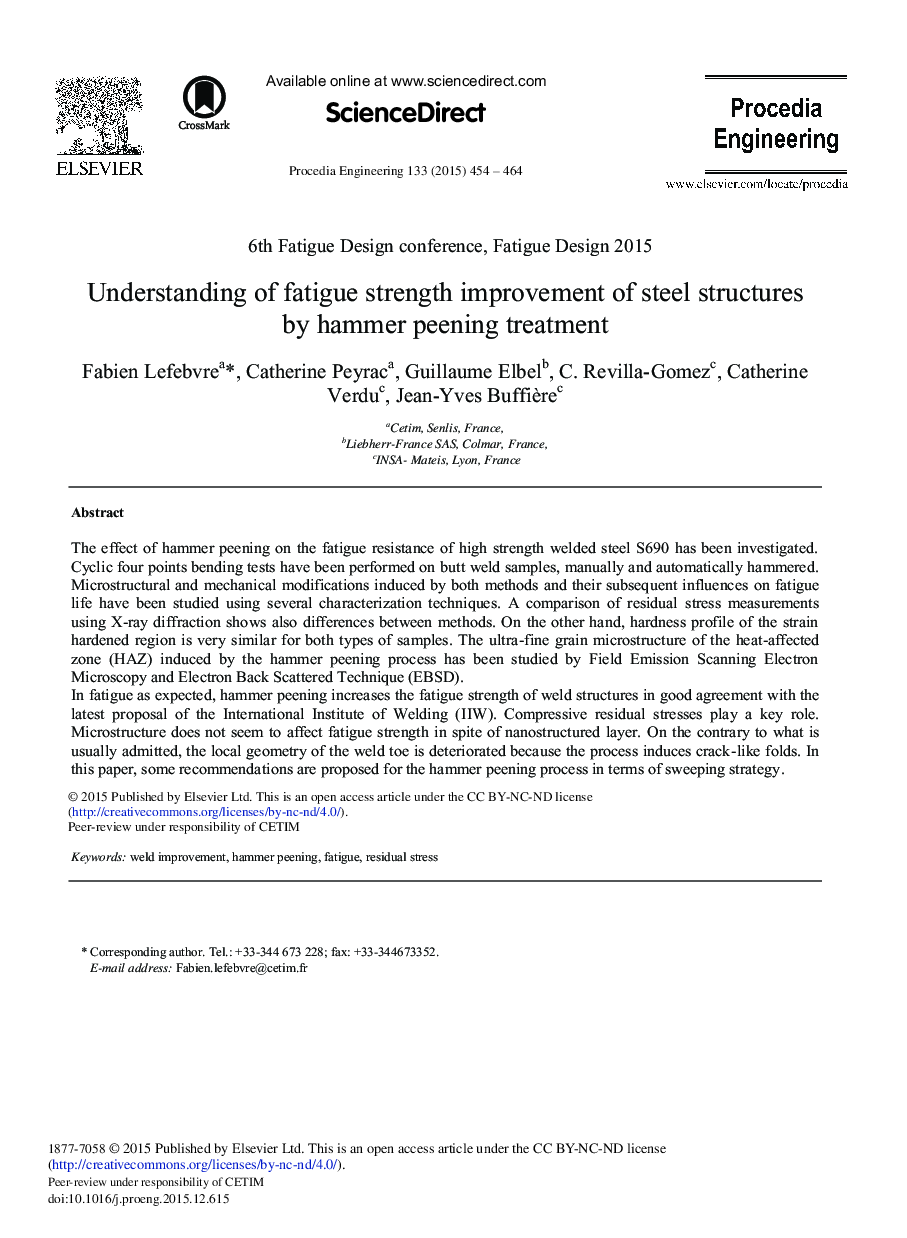| Article ID | Journal | Published Year | Pages | File Type |
|---|---|---|---|---|
| 853954 | Procedia Engineering | 2015 | 11 Pages |
The effect of hammer peening on the fatigue resistance of high strength welded steel S690 has been investigated. Cyclic four points bending tests have been performed on butt weld samples, manually and automatically hammered. Microstructural and mechanical modifications induced by both methods and their subsequent influences on fatigue life have been studied using several characterization techniques. A comparison of residual stress measurements using X-ray diffraction shows also differences between methods. On the other hand, hardness profile of the strain hardened region is very similar for both types of samples. The ultra-fine grain microstructure of the heat-affected zone (HAZ) induced by the hammer peening process has been studied by Field Emission Scanning Electron Microscopy and Electron Back Scattered Technique (EBSD).In fatigue as expected, hammer peening increases the fatigue strength of weld structures in good agreement with the latest proposal of the International Institute of Welding (IIW). Compressive residual stresses play a key role. Microstructure does not seem to affect fatigue strength in spite of nanostructured layer. On the contrary to what is usually admitted, the local geometry of the weld toe is deteriorated because the process induces crack-like folds. In this paper, some recommendations are proposed for the hammer peening process in terms of sweeping strategy.
